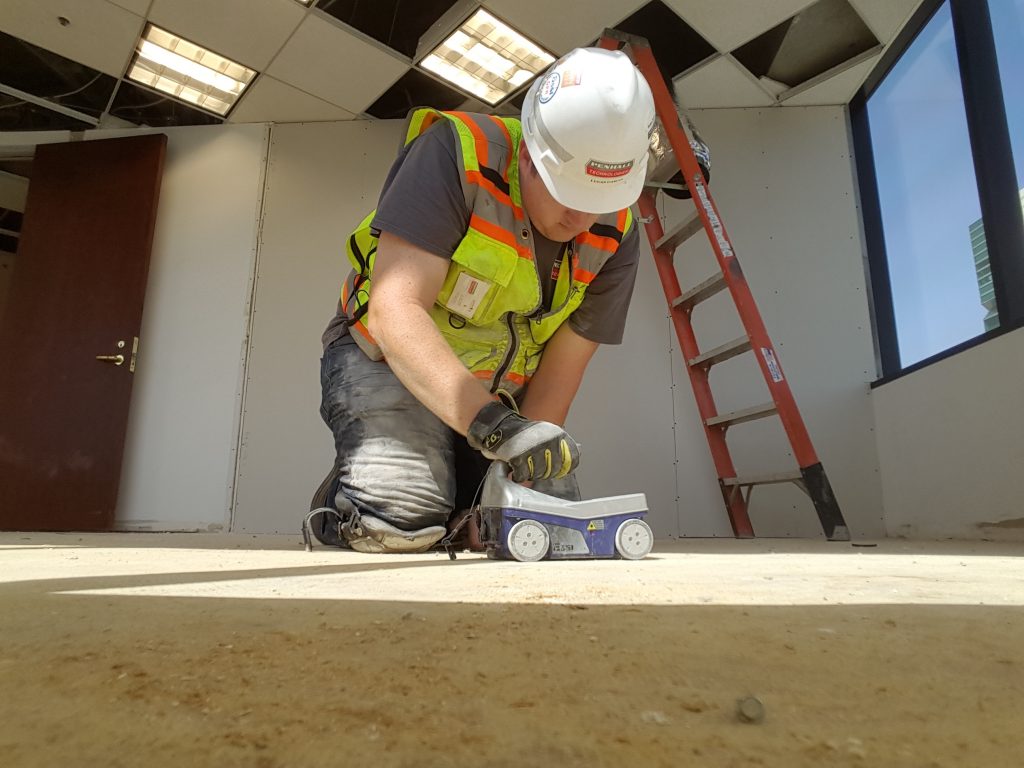Enhance Construction Safety with Expert Concrete Scanning
Enhance Construction Safety with Expert Concrete Scanning
Blog Article
Introduce the Transformative Power of Concrete Scanning in Taking Full Advantage Of Performance and Safety
Concrete scanning has emerged as a vital device in the construction industry, providing unequaled benefits in improving project efficiency and guaranteeing security standards. By utilizing advanced innovation, concrete scanning permits experts to see beyond the surface, revealing hidden intricacies that could affect the structural honesty of a structure. The transformative power of concrete scanning hinges on its ability to provide real-time data and detailed insights, reinventing just how projects are prepared and performed. As we look into the complexities of this cutting-edge technique, a world of possibilities opens up, showcasing a new age of building methods that prioritize precision and safety and security.
Significance of Concrete Scanning
Making sure the architectural integrity and safety of building and construction tasks begins with the essential step of carrying out comprehensive concrete scanning. Concrete scanning is a non-destructive technique made use of to identify and map subsurface components within concrete frameworks. This procedure is necessary in identifying prospective risks, such as rebar, post-tension cable televisions, and conduits, that might be hidden within the concrete. By using sophisticated innovations like ground-penetrating radar (GPR) and electromagnetic induction, building groups can precisely situate these components without causing any type of damages to the framework.
In addition, concrete scanning aids in optimizing project timelines and spending plan by staying clear of unanticipated expenses and delays that may occur due to unanticipated blockages within the concrete. Inevitably, spending in complete concrete scanning is an aggressive strategy that boosts both efficiency and security in building projects.
Exactly How Concrete Scanning Functions
Concrete scanning runs as a critical device in building and construction jobs by utilizing sophisticated technologies to identify and map subsurface components without triggering architectural damages. Ground Penetrating Radar (GPR) and Electromagnetic Induction (EMI) are 2 primary approaches made use of in concrete scanning.
During the scanning process, the data gathered is examined in real-time, enabling instant recognition of potential dangers or barriers under the surface area. By utilizing these innovative modern technologies, concrete scanning significantly reduces the threat of pricey problems and injuries on building sites.
Benefits of Concrete Scanning
Utilizing sophisticated scanning modern technologies in building and construction tasks supplies a multitude of advantages, boosting both efficiency and safety on-site. Among the main benefits of concrete scanning is the ability to detect and locate embedded objects such as rebar, post-tension wires, and avenues accurately. By determining these aspects before drilling or reducing into concrete structures, the risk of unintentional strikes is significantly lowered, preventing potential injuries to employees and damage to the framework itself. In addition, concrete scanning aids in planning and designing more effectively, as it gives specific info about the location and deepness of structural parts.

Instance Research Studies: Concrete Scanning Success

In one more situation, a construction firm utilized 3D concrete scanning to evaluate the condition visit site of maturing concrete frameworks in a historical structure. The thorough scans provided important insights right into the degree of wear and tear and assisted focus on upkeep initiatives successfully. By proactively resolving locations of concern identified through scanning, the company was able to extend the lifespan of the structure and ensure occupant safety.
These case studies underscore the transformative power of concrete scanning in improving effectiveness, accuracy, and safety in construction projects.
Implementing Concrete Scanning in Projects
Implementing advanced scanning modern technologies throughout click here for more building and construction jobs has ended up being increasingly important for boosting accuracy and safety. By incorporating concrete scanning right into job planning and execution, building and construction groups can determine prospective hazards, such as rebar or post-tension cables, concealed within concrete frameworks. This positive technique reduces the risk of crashes, hold-ups, and costly rework, inevitably resulting in a lot more effective job timelines and budget plans.
To apply concrete scanning successfully, project managers need to collaborate closely with skilled scanning experts to identify one of the most ideal scanning strategies for the specific project requirements. Engaging scanning experts from the early stages of a project allows the team to create thorough scanning plans that attend to vital locations of issue and make sure complete data collection.
Additionally, including concrete scanning into normal project operations can simplify decision-making processes, as real-time check information offers instant understandings into the condition of concrete structures - Concrete Scanning. This data-driven technique helps with educated analytic and enables teams to make adjustments without delay, fostering a culture of effectiveness and security throughout the project lifecycle

Final Thought
Finally, concrete scanning plays an essential duty in enhancing efficiency and security in construction jobs. By making use of advanced modern technology to detect and map out underlying structures within concrete, this procedure aids to protect against pricey mistakes, guarantee structural integrity, and decrease threats on site. With More Bonuses the capability to reveal covert elements and provide accurate data, concrete scanning proves to be a valuable tool for optimizing job results and optimizing overall success.
Concrete scanning is a non-destructive method used to identify and map subsurface components within concrete structures. Furthermore, concrete scanning helps in maximizing job timelines and budget by preventing unexpected expenses and hold-ups that may develop due to unanticipated blockages within the concrete. One noteworthy case study involves a large improvement project where concrete scanning played an essential function in making certain project success.In another situation, a building company used 3D concrete scanning to analyze the problem of maturing concrete frameworks in a historical building. By integrating concrete scanning into project planning and implementation, building and construction groups can recognize possible threats, such as rebar or post-tension cables, concealed within concrete frameworks.
Report this page